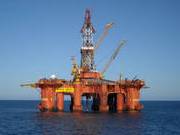President and CEO Eldar Sаtre.
“We continue to reduce underlying operational costs and deliver a quarter with strong operational performance and solid results from marketing and trading. In the third quarter, our financial results continued to be affected by low liquids prices. The results enable us to increase our guided production growth to above 3% for 2015, as well as reduce the guided capital expenditure level by USD 1 billion to around USD 16.5 billion. We have generated a strong cash flow in the current environment and have a solid balance sheet with a net debt ratio of 24%," says president and CEO of Statoil ASA, Eldar Sætre.
Adjusted earnings were NOK 16.7 billion in the third quarter compared to NOK 30.9 billion in the same period in 2014. The reduction was primarily a consequence of lower liquids prices and increased depreciation, partially offset by stronger refining margins, good operational performance and reduced underlying operating costs. Realised average liquids prices in the quarter were down 37% measured in NOK compared to the third quarter last year. Adjusted earnings after tax were NOK 3.7 billion, compared to NOK 9.1 billion in the same period last year.
Statoil’s net operating income according to IFRS for the quarter was NOK 7.3 billion, compared to NOK 17.0 billion in the same period in 2014. Net impairment charges of NOK 4.8 billion related to exploration assets and various other asset impairments and reversals, provisions for disputes of NOK 3.3 billion and net other adjustments of NOK 1.3 billon impacted the IFRS results. Earnings per share were negative NOK 0.89 in the quarter, an improvement compared to negative NOK 1.48 in the same period last year.
“We are progressing our efficiency programs according to the plan we communicated in February, and continue to reduce the underlying operational cost. I am pleased with the way we are taking costs down, but the continued low prices in the third quarter demonstrates that we must continue to chase further cost efficiencies,” says Sætre.
Statoil delivered production of 1,909 mboe per day in the third quarter, up 4% compared to the same period in 2014. The underlying production growth, after adjusting for divestments, was 7% compared to the third quarter last year. The production from the Norwegian continental shelf (NCS) grew 10% in the third quarter of 2015 compared to last year, adjusted for divestments. Equity production outside of Norway was 735 mboe per day, a 4% increase compared to the same period last year, adjusted for divestments.
Statoil is pleased with the development of Johan Sverdrup with cost estimates coming down by 7%. However, Statoil and its partners have decided to accept a delayed timetable for the commencement of production from the Aasta Hansteen and Mariner fields from 2017 to the second half of 2018. The updated cost estimate for Aasta Hansteen has been increased by around 9% since the plan for development and operation (PDO). In addition, a currency effect of NOK 2.4 billion brings the total cost estimate to around NOK 37 billion. For Mariner, the cost increase is slightly above 10% as compared to the original plan.
In the third quarter Statoil made two discoveries on the NCS, as well as one on the UK continental shelf. As of 30 September, Statoil had completed 33 wells, with five wells on-going. Adjusted exploration expenses in the quarter were NOK 3.4 billion, marginally down from NOK 3.6 billion in the third quarter of 2014.
Cash flow from operations amounted to NOK 90.2 billion in the first nine months compared to NOK 99.1 billion last year. Statoil maintained a strong capital structure, and net debt to capital employed at the end of the quarter was 24%. Organic capital expenditure was USD 11.6 billion in the first nine months.
The board of directors has decided to pay a dividend of USD 0.2201 per ordinary share for the third quarter and Statoil shares will trade ex-dividend on Oslo Børs commencing 17 February 2016. From and including the third quarter, dividends will be declared in USD, with the NOK dividend calculated and communicated four business days after the record date for the Oslo Børs shareholders.
The serious incident frequency (SIF) for the 12-month period ending 30 September 2015 was 0.5 compared to 0.6 the same period last year.
03 Декабря 2025 | среда | 11:49


